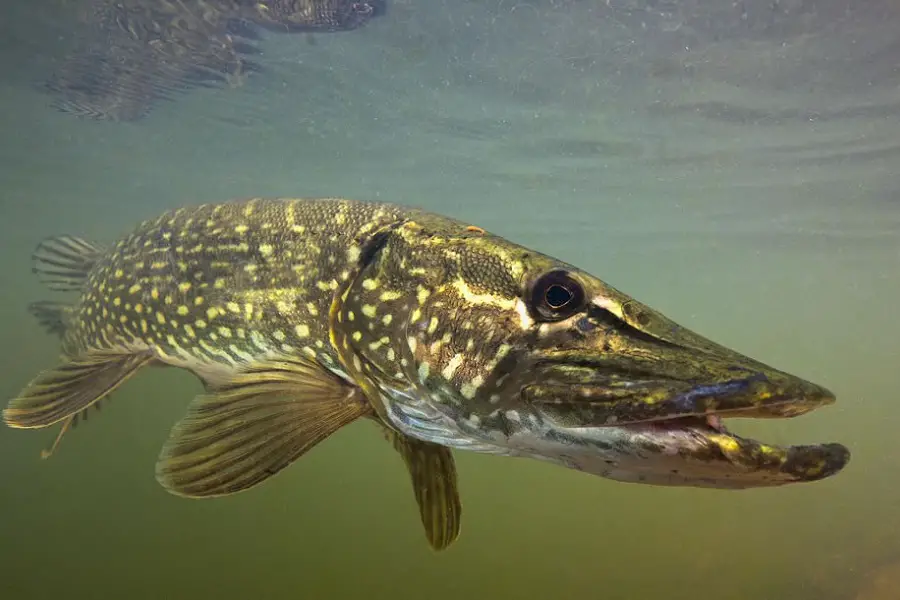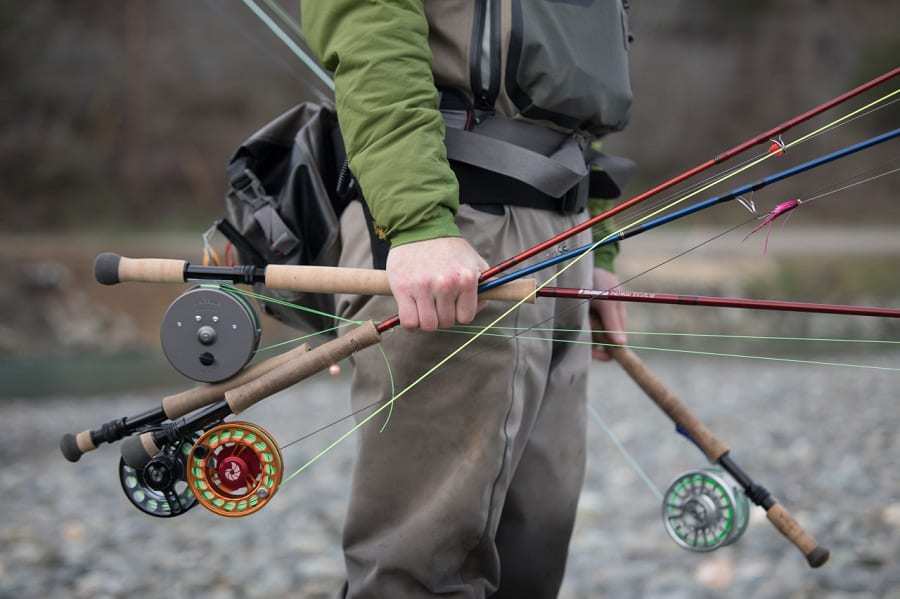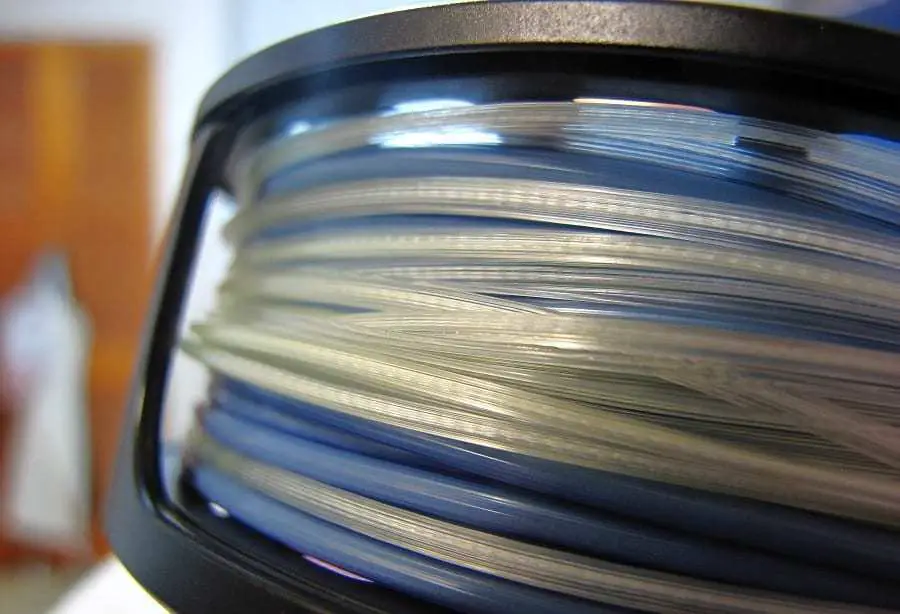Are you new to fishing and want to try your hand at catching the infamous pike?
In this post, we have got you covered with all the tips and tricks you need to know as a beginner.
From understanding what kind of fish pike is to choosing the right bait and lures for successful fishing.
We will also go over essential tips for beginners, such as finding the best places to fish for pike and how to fish along the bank.
So, grab your gear and let’s dive into the world of pike fishing!
What Kind of Fish is Pike?
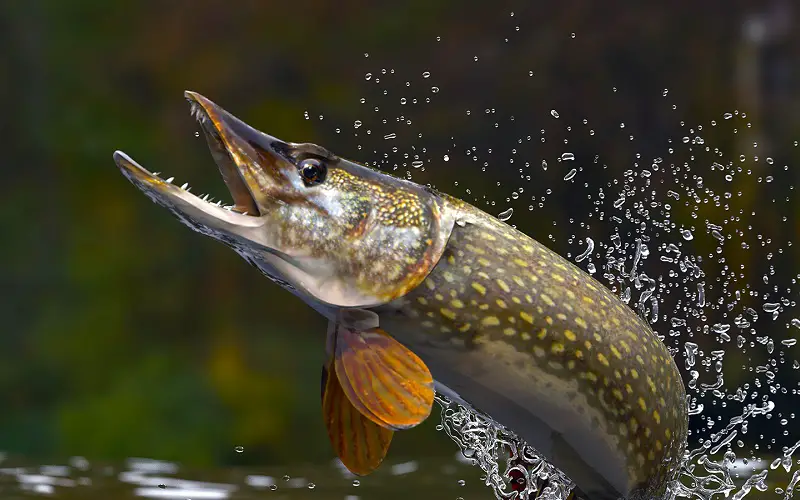
Pike, commonly referred to as northern pike, muskellunge, or pickerel, is a freshwater fish that can be found in North America, Europe, and northern Asia.
These predatory fish have become increasingly popular among anglers due to their large size and challenging catch.
Pike are known for their aggressive feeding habits and possess a formidable set of sharp teeth within their elongated jaws.
They are often caught using lures or live bait and can weigh up to 50 pounds, making them a highly sought-after trophy fish for many anglers.
However, it is important to note that due to their popularity, pike populations in some areas have been overfished, leading to conservation efforts being put in place to protect these valuable species.
How to Catch Pike Fish?
To catch a pike, anglers should equip themselves with a sturdy, medium-heavy fishing rod and a strong line.
Pike are often found in shallow waters near vegetation or structures. Live bait or lures that imitate small prey can be effective.
When reeling in the catch, use a steady and firm motion to prevent the fish from escaping.
Choosing the Right Bait for Pike Fishing
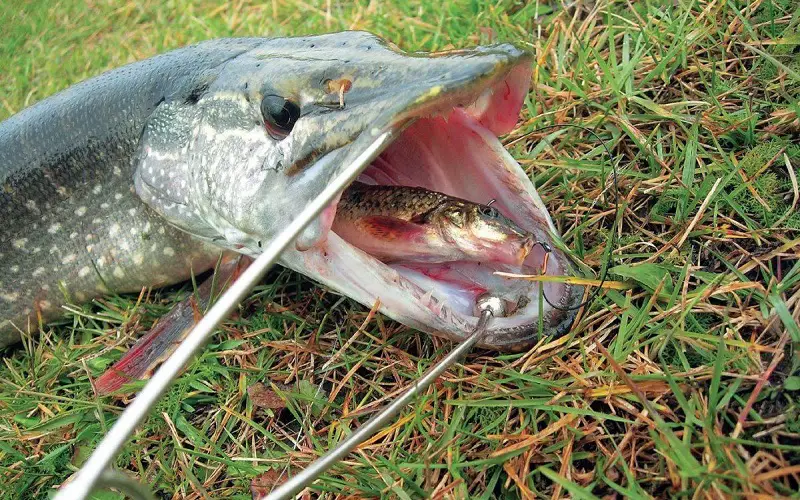
When it comes to selecting the perfect bait for northern pike fishing, several factors come into play.
Experienced pike anglers recommend using live baits such as minnows or suckers, as they are effective in enticing big pike with their sharp teeth that can grow over 40 inches long.
Alternatively, artificial lures like spoons or spinners imitating small prey or baitfish can also be effective when retrieved smoothly with a spinning reel.
It is recommended that you experiment with different types of baits suitable for the vegetation present or time of year since pike will frequently move from shallow water to deeper water.
It depends on several variables, such as temperature changes due to weather patterns or weed beds dying off late in the summer.
Lure Types for Pike Fishing
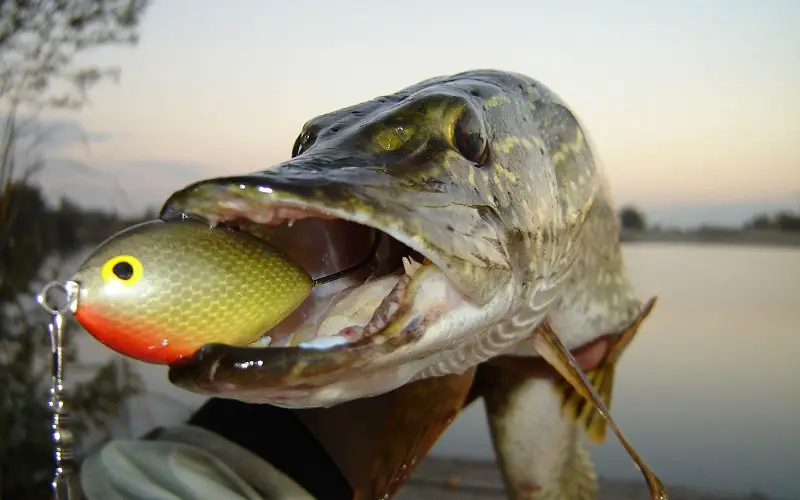
When choosing the best fishing lure for northern pike fishing, it’s important to consider different factors such as water temperature, time of year, and target prey.
- Crankbaits: A popular choice for pike fishing due to their lifelike swimming action.
- Spinnerbaits: Effective in murky water and can attract pike with their flash and vibration.
- Jigs: Versatile lure that can be used in different depths and water conditions.
- Topwater Lures: Exciting to use as pike strike from below, creating a thrilling moment.
- Swimbaits: Mimic the movement of live fish, making them a great option for big pike.
Successful pike anglers often use a combination of live bait like minnows or suckers and artificial lures like spinners or crankbaits.
When retrieving your lure, make sure to vary your speed and depth according to the conditions. Popular lures for bigger pike include chartreuse-colored spinners or large swimbaits that mimic baitfish movements.
Always use fluorocarbon leaders to prevent razor-sharp teeth from cutting through your line when catching big fish like monster pike or giant northern pike.
Essential Tips for Pike Fishing Beginners
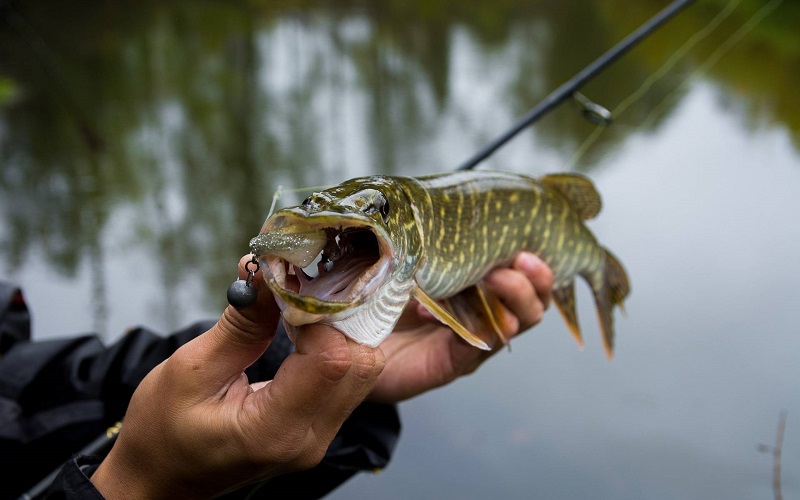
Researching the best locations and times to fish for pike is crucial for beginners looking to catch big pike.
Invest in quality fishing gear like a sturdy spinning reel, fluorocarbon leader, and appropriate lures like spinners or jigs.
Pike behavior knowledge is vital; they prefer weed beds, drop-offs, shallow water with vegetation, and deeper water with smaller fish nearby.
Practice proper catch-and-release techniques using pliers and jaw spreaders because pike have sharp teeth and are gamefish that need protection.
Experienced anglers recommend hiring a guide or joining a fishing community to learn early springtime casting techniques with baitfish like shiners, suckers, or smelt.
When ice fishing for pike, use a depth finder to locate potential hiding spots. Then, try using large lures or bait and jigging your line to imitate movement and entice the fish.
Tip-ups can also increase your chances of catching pike by allowing you to fish multiple holes at once.
Best Places to Fish for Pike Fish
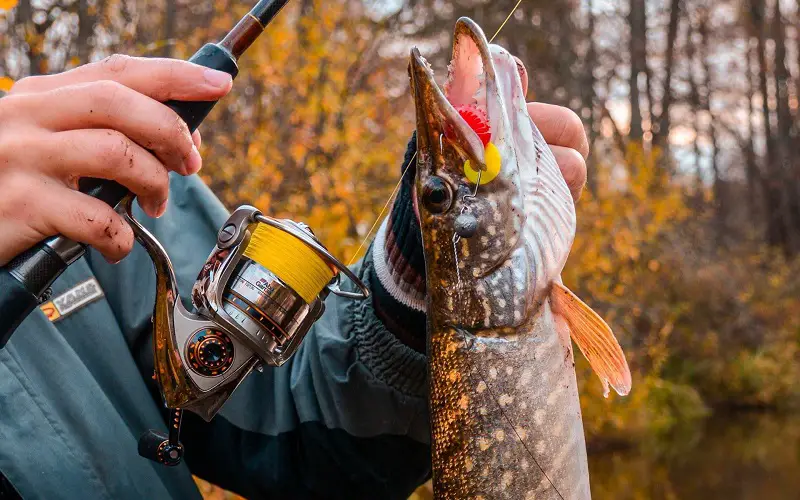
To find the ideal spot to catch big pike, there are several factors to keep in mind.
Firstly, it’s essential to locate bodies of water with a significant population of pike fish. Secondly, focus your efforts on areas with natural structures like weed beds or drop-offs where they tend to hide.
You should also consider the time of day and weather conditions, as these can affect their behavior and feeding patterns. Remember not to overlook smaller or overlooked bodies of water where you may find good-sized pike lurking.
How to Fish for Pike along the Bank
To catch pike fish from the bank, choosing the right gear is essential. A spinning reel like Abu Garcia Vengeance, paired with a fluorocarbon leader, can help you handle the sharp teeth of this predator.
Casting with live bait like shiners or using chartreuse spinners can attract bigger pike, while soft plastics work great for smaller males.
A Castable fish finder can be helpful in locating big fish in deeper water in the early morning or at dusk.
Retrieving your bait slowly with varying speed and technique around weed beds or drop-offs increases your chances of success during colder water temperatures.
Understanding Pike Fish Behavior and Vegetation
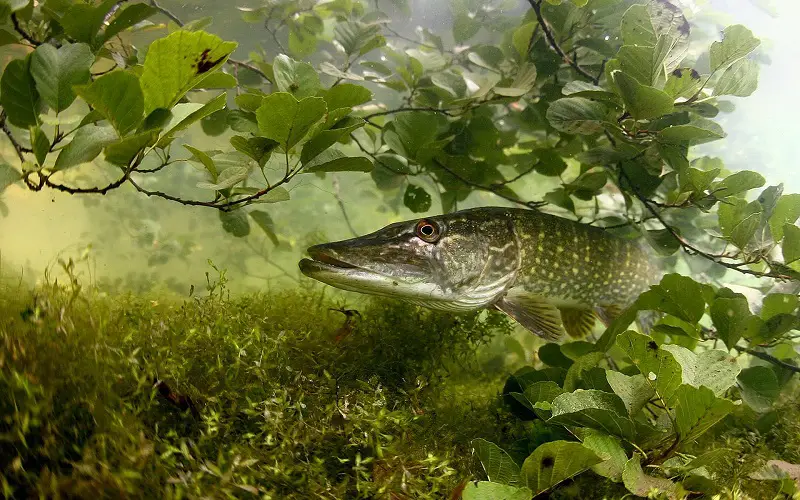
Pike fish are ambush predators that hide in vegetation such as weed beds, lily pads, or submerged logs to catch their prey.
Anglers need to use lures such as spinners or live bait, like suckers that mimic the movements of prey. It is also important to vary your technique while retrieving your lure or baitfish slowly to entice a bite.
Patience is key when trying to catch big pike, as it can take time and effort. Pike anglers should also consider the time of year and water temperature while fishing for these game fish.
Early spring and late spring are usually considered the best times for northern pike fishing in shallow water with warmer water temperatures.
Casting your line along the bank and retrieving it slowly until you feel a strike is also helpful in catching monster pike.
Conclusion
With these tips and tricks, you can easily start your journey into the world of pike fishing.
Remember to choose the right bait and lure types, as well as understand the behavior of the fish and the vegetation around it.
Whether you’re fishing in open water or ice fishing in the winter, always keep safety in mind and follow local regulations.
With practice and patience, you’ll soon master the art of catching this elusive but exciting fish.
References:


